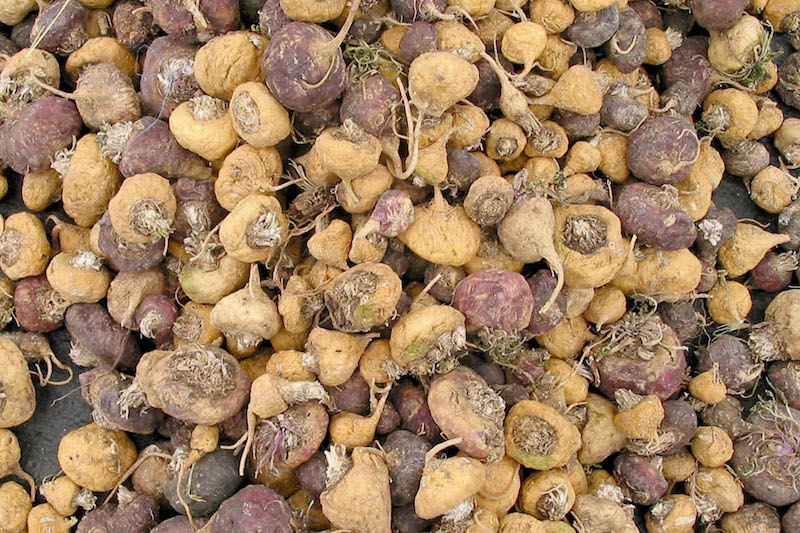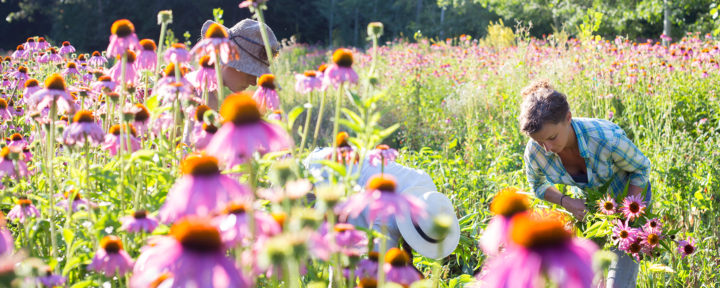Maca
Lepidium meyenii
Brassicaceae – Mustard/crucifer family
- none1
Details & Ingredients
BOTANICAL DESCRIPTION
Maca is an herbaceous plant with a turnip-like tuberous taproot that grows approximately 4 inches (0.1 meters) by 1 foot (0.3 meters).3,7 The color of the swollen roots vary from a pinkish-red classified as “purple”, a light yellowish-brown classified as “yellow” and a dark purplish-black classified as “black”. The plant has deeply lobed leaflets that are arranged in a basal rosette and are attached by a petiole.6 The young stems and frilly leaves look similar to carrot tops.
root
Prominent Constituents as Reported in Scientific Literature:
Antioxidants, flavonoids, glucosinolates, and isothiocyanate derivatives. 2,6
TurkeyES
Promotes Healthy Sexual Libido, Function & Fertility*
DID YOU KNOW?
Maca is suspected to be an allelopathic plant (which means other plants will not grow nearby).3
INFORMATION
Maca is native to South America, at high altitudes (up to 15,700 feet elevation above sea level) in the Andes Mountains of Peru, where few other plants grow.3,5 The plant has adapted to barren regions with poor quality rocky soil under extreme sun, thin air, intense winds and subzero temperatures.3 Cultivated plants are often rotated due to the soil depletion of the inhospitable land, leaving the fields fallow to replenish the earth for the next batch of roots.3 Cultivation to mature harvest from seed to root, can take from 6 to 9 months.3 Maca’s harvest season is in the winter months in Peru, generally May to October.5
The plant is monoecious with both female and male parts on the same plant and is pollinated by insects.3 Several herbalists and scientists have debated whether this seed-propagated plant is an annual, biennial or perennial.6 Due to the high altitude and winds in its native harsh, dry climate, the plant’s aerial portion grows close to the ground.5 Maca is suspected to be an allelopathic plant (which means other plants will not grow nearby).3
The leaves and small mature pear-shaped root of Maca are edible and have been a traditional and important staple food in South America.3,6 The plant is commonly known by the Andean highland natives as hipocotíleo.6 Generally the root is cooked before eating and can be baked slowly.3 The nutritional content of the dried root resembles that of cereal grains, with a sweet and pleasant taste.3 The dried root is cooked in water to make a South American porridge called mazamorra.3 The young leaves are generally eaten raw or cooked and have a spicy peppery flavor, similar to other relatives in the Brassica family, such as cress.3
Quality of the Maca root is classified by the three varying colors of the Peruvian root: black, yellow, and purple, with black and purple going for the higher prices in wholesale markets in China, but in Hong Kong, the price of all is similar.4 Grading is then furthered by consistency, size, and aroma with the strong spicy radish-like flavor being preferred.4
The people of Peru’s Junín and Pasco provinces have been cultivating Maca for more than 3,000 years.5 The fleshy underground root has been used traditionally in South American herbalism for centuries.6 In the past decade, it has gained in popularity, especially a large boom (and subsequent fall) in China despite its lack of traditional use in Chinese Herbalism.4 This boom caused prices to skyrocket, which then lead to cultivation of domestic Chinese Maca (black and yellow classifications) in the Yunnan province of southwestern China.5 However, Peruvian Maca is considered to be superior with an aroma and taste that is more potent.4
- McGuffin M, Kartesz J. American Herbal Products Association’s Herbs of Commerce, 2nd ed. Silver Springs, MD: Publication of the American Herbal Products Association; 2000.
- Government of Canada. 2019. Compendium of Monographs, Natural Health Product: Maca – Lepidium Meyenii. Health Canada, Ottawa, Ontario NC K1A 0K9, Canada.
- Plants for a Future. 1996-2012. Plants for a Future Database: Lepidium meyenii (Plants For A Future, 13 February 2020). Devon EX7 9LX England.
- Brand E. The Rise and Fall of Maca in China. HerbalGram: The Journal of the American Botanical Council. 2016; Issue 111: page 28-30.
- Smith T. Maca Madness: Chinese Herb Smugglers Create Chaos in the Peruvian Andes. Consequences for the market, consumers, and local farming communities. HerbalGram: The Journal of the American Botanical Council. 2015; Issue 105: page 46-55.
- Meissner HO, Mscisz A, Kedzia B, Pisulewski P, Piatkowska E. Peruvian Maca: Two Scientific Names Lepidium Meyenii Walpers and Lepidium Peruvianum Chacon – Are They Phytochmically-Synonymous? International Journal of Biomedical Science. March 2015; Vol. 2, No. 1.
Gallery




